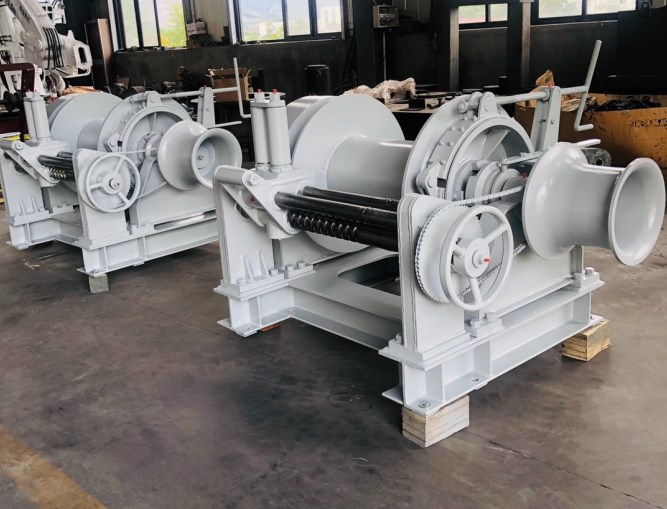Understanding the Working Principle of Hydraulic Mooring Winches
Hydraulic mooring winches are powerful and reliable devices widely used in the maritime industry for secure and efficient mooring operations. These winches utilize hydraulic power to provide robust pulling force and precise control. In this blog post, we will delve into the working principle of hydraulic mooring winches, exploring the key components and their functions, and understanding how they contribute to the smooth operation of these essential maritime tools.
Hydraulic System Overview
At the heart of a hydraulic mooring winch is a hydraulic system that converts hydraulic energy into mechanical force. The hydraulic system consists of several key components, including a hydraulic pump, hydraulic fluid, valves, cylinders, and a motor. It operates based on Pascal's law, which states that pressure applied to a fluid in a confined space is transmitted equally in all directions.
Hydraulic Pump
The hydraulic pump is responsible for generating hydraulic pressure by converting mechanical power into hydraulic energy. It draws hydraulic fluid from a reservoir and delivers it to the hydraulic motor, creating the required force for winch operation. Common types of hydraulic pumps used in mooring winches include gear pumps, vane pumps, and piston pumps, each with its own advantages in terms of efficiency and performance.
Hydraulic Motor
The hydraulic motor receives high-pressure hydraulic fluid from the hydraulic pump and converts it into mechanical power. It drives the winch drum or spool, enabling the movement of the mooring line. Hydraulic motors used in mooring winches can be either radial piston motors or axial piston motors. They are designed to withstand high pressures and deliver consistent torque for smooth and controlled winch operation.
Control Valves
Control valves play a crucial role in regulating the flow and direction of hydraulic fluid within the mooring winch system. They determine the speed and direction of the winch drum, allowing for precise control during mooring operations. Control valves are typically operated manually or electronically, enabling operators to adjust the winch speed and direction according to the specific requirements of the vessel and mooring conditions.
Hydraulic Cylinders
Hydraulic cylinders are mechanical actuators that convert hydraulic energy into linear force. In hydraulic mooring winches, cylinders are employed to control the tension and positioning of the mooring lines. By extending or retracting the hydraulic cylinders, operators can adjust the tension on the lines, ensuring secure and stable mooring of the vessel.
Safety Features
Hydraulic mooring winches are equipped with various safety features to protect the winch system and prevent accidents. These features may include pressure relief valves, overload protection systems, emergency stop buttons, and hydraulic lock valves. They ensure the winch operates within safe parameters, preventing excessive pressure, overloading, or uncontrolled movements.
Conclusion
Hydraulic mooring winches rely on the power of hydraulic systems to deliver robust pulling force and precise control for secure mooring operations. Understanding the working principle and components of mooring winches empowers maritime professionals to harness the full potential of these reliable tools, enhancing safety and efficiency in mooring applications.



Comments
Post a Comment